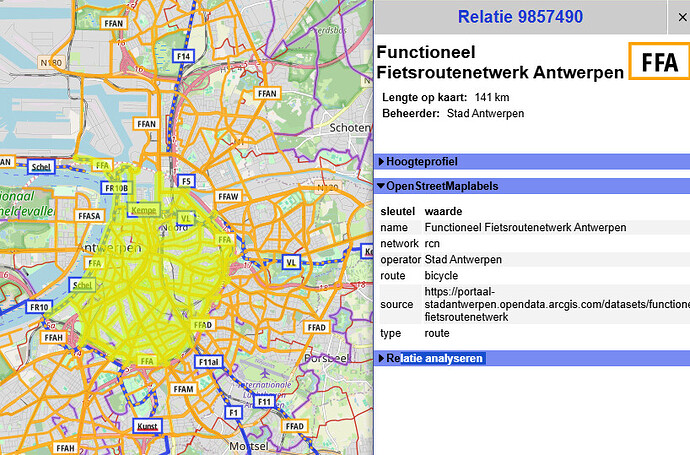Hello!
I’m sorry but I didn’t read the whole thread, only a few dozens messages. I’m the GIS specialist of Vélo & Territoires, the French association monitoring the “Schéma national des véloroutes” (national bikeroutes network/planning schema) or SNV. I’m also the french representative for the EuroVelo network, on GIS and data subjects.
Let’s begin by defining “Véloroutes” (or bikeroutes), as per the Vélo & Territoires / French government definition:
continuous routes designed to facilitate cycling over medium and long distances. They are supported in particular by roads belonging to the public or private domain of the State, its public establishments and the local authorities and their groupings responsible for roads. They use any type of road suitable for cyclists and are continuously signposted. They may be of local, departmental, regional, national or European interest. Cycle routes link different areas of France and enable people to cycle through towns and cities in good conditions.
The association I work for especially cares about so called “Véloroutes”, and less about bike routes primarily on shared roads, intended for road cyclists, or one-day cycle loops.
We have 4 schemas level, as in network values: european, national, regional, and departmental. All véloroutes we know of and their schema level are available on our GIS portal Velodatamap. For french véloroutes, I think our official classification should help OSM contributors decide which value of network to attribute. European network is not defined by us, but by EuroVelo. National network is defined by us, and a national véloroute should meet the criteria defined in the SNV rules.
As per this document, a national véloroute should:
- cross two French regions ;
- be at least 100 km long ;
- have a 60% already cyclable ratio.
For regional and departmental levels, we don’t enforce anything as it is the local authorities’ responsibility. Some local authorities define precise criteria for departmental and regional véloroutes, as Normandy departments did: Route numbering guide for Normandy. And here is their Normandy véloroutes schema.
However, it begins to be a bit complicated when the Normandy region has its own definition: Soutien financier au développement des véloroutes de Normandie | DREAL Normandie. Some regional véloroutes in the region’s eyes are only departmental in the departments’ eyes, and vice versa. Good luck for tagging that!
With the help of those documents and our GIS portal, you should be able to define more easily the best network value for most of French véloroutes.
As for cycle_network, all véloroutes registered in the national schema can be tagged cycle_network=Schéma national des véloroutes. All EuroVelo routes in french territory are by default included in the SNV, even if they should be tagged cycle_network=EuroVelo

